
Three Rare Ulysse Nardin Champlevé Chinese Zodiac Watches
Ulysse Nardin’s expertise in the enamel arts is most prominent in these limited-edition pieces
With the arrival of Lunar New Year, luxury watch brands launch exclusive pieces or collections featuring the animals of the Chinese zodiac. Just this year, Chopard unveiled a 12-piece collection after dedicating 12 years to its creation. And not to be outdone, Ulysse Nardin also joins in on the festivities with their own lavish releases for the new year.
.1-_fc0e64d0d0?_a=BAVAfVDW0)
The three limited-edition Ulysse Nardin watches (88 pieces each) that have piqued our interest are: the Classico Horse, Classico Dragon and Classico Serpent. The latter two, we should point out, were presented at the Wristcheck showcase at the 10th-anniversary Horology Forum back in October. The most striking features of these three watches are their elaborate enamel dials, all of which were created by Swiss dial maker Donzé Cadrans, now a subsidiary of Ulysse Nardin.
Donzé Cadrans and Champlevé
Before we go into the details on the watches themselves, we should talk a bit about the craftsmen behind these limited-edition dials. Established in 1972 by Francis Donzé, Donzé Cadrans has produced dials for brands like Patek Philippe, Cartier, Girard-Perregaux, Moritz Grossman and more. In the late 1980s, Ulysse Nardin joined forces with Donzé Cadrans and in 2011, acquired the workshop when it faced financial struggles. The merger was a natural fit as enamel work has always been a hallmark of Nardin's expertise.
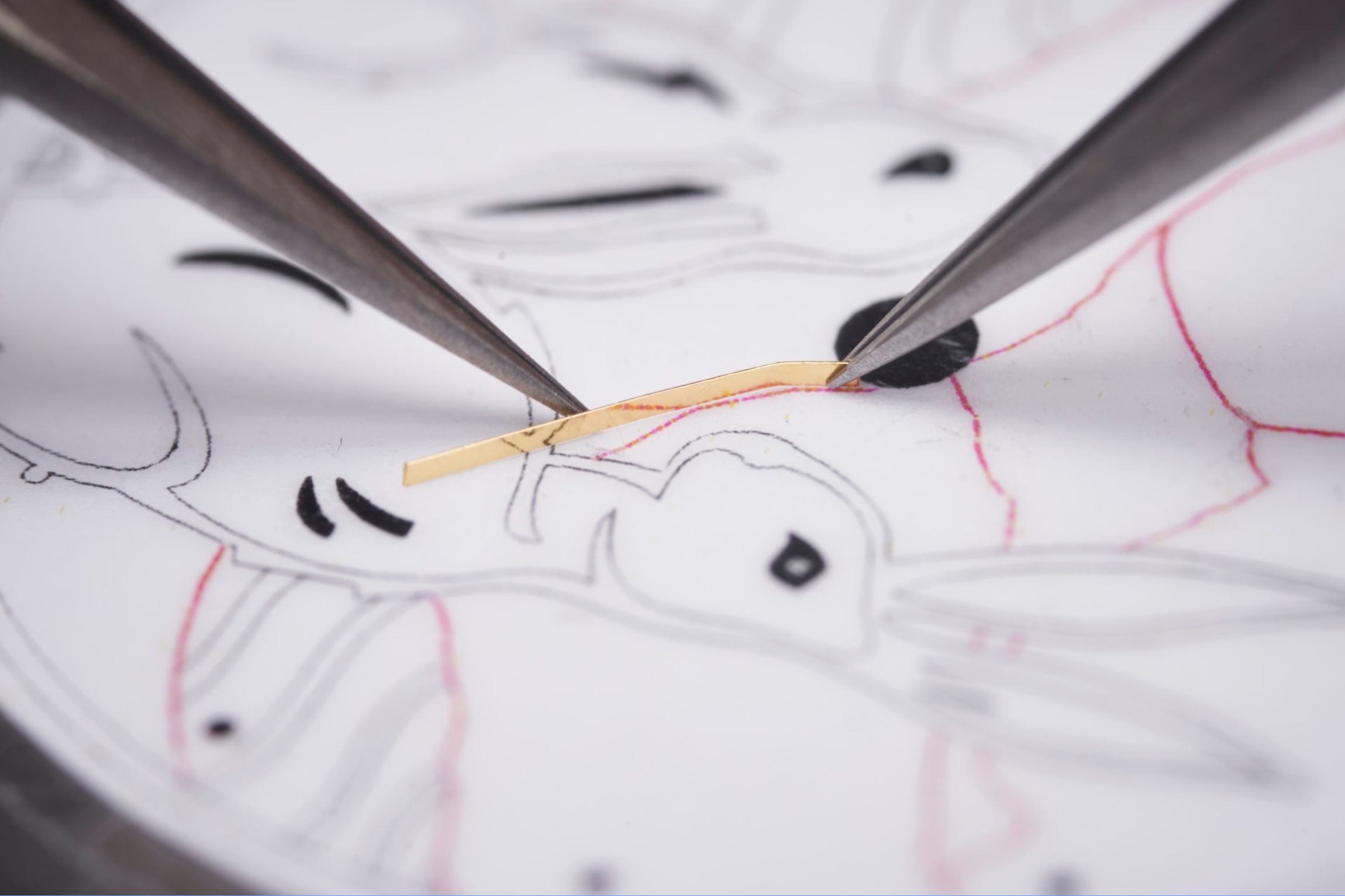

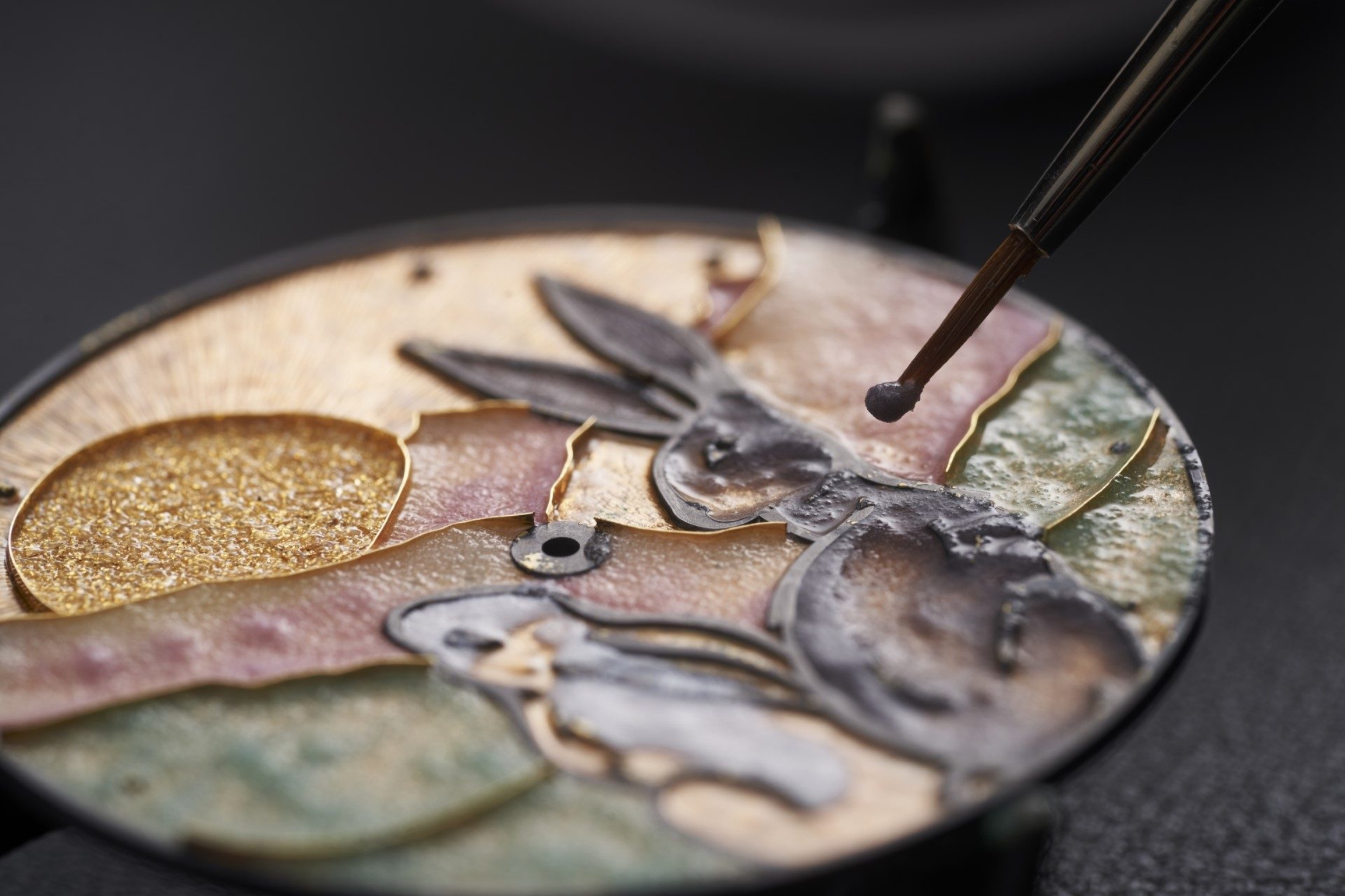

Every year, their production yields around 1,200 to 1,500 dials, with approximately 20% featuring the intricate cloisonné or champlevé enameling techniques. The former is commonly found on Patek Philippe World Timers, utilizing fine wires to outline and contain the enamel design. As for champlevé, its roots can be traced back to ancient Celtic art and involves creating cavities in metal before filling them with layers of enamel, resulting in multi-dimensional masterpieces. In the case of Ulysse Nardin and its Chinese zodiac creations, the process usually involves several enameling techniques applied in succession.
Ulysse Nardin Classico Dragon
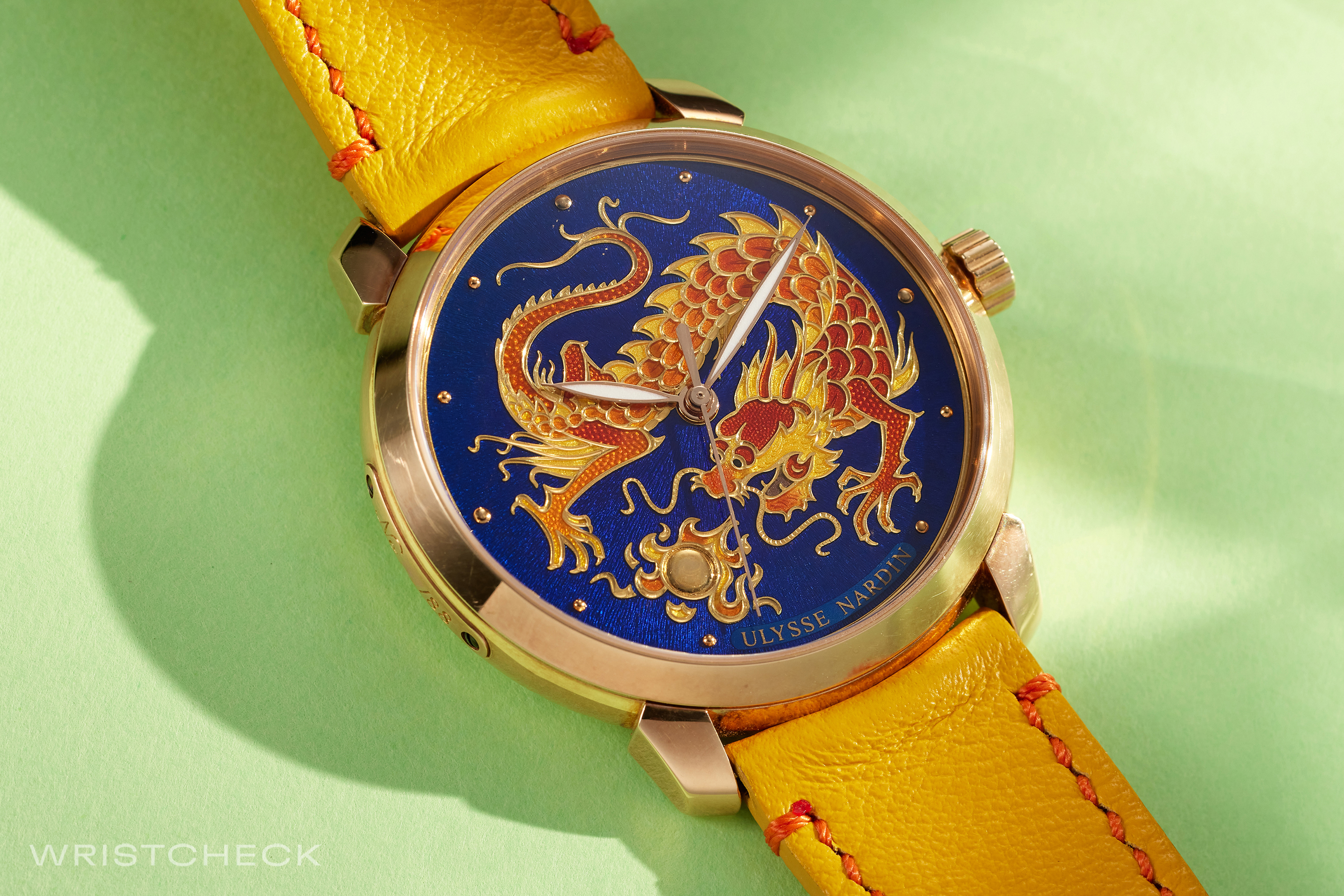
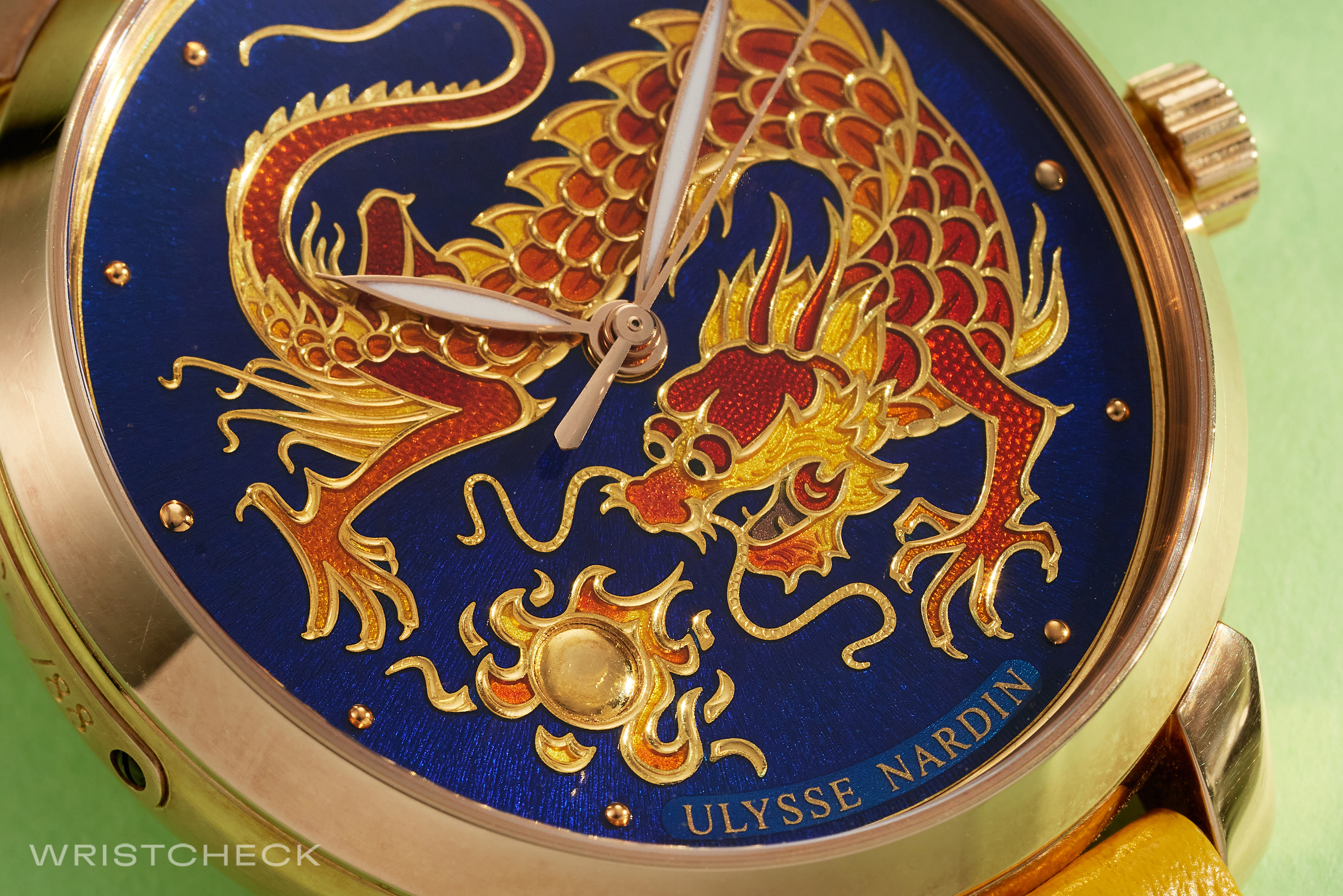
To celebrate the auspicious year of the dragon, this particular model was released in 2012. The focal point of the exquisite watch is undoubtedly the bold champlevé dragon displayed on its dial, rendered in shades of red, orange, and yellow. Each individual scale is meticulously outlined by a golden border, with even the enamel within each cell textured to emulate the scaly skin of this mythical creature. The attention to detail on this piece is unparalleled - from the intricate whiskers to the textured scales and even the flaming pearl, symbolizing spirituality, power, and wisdom. Against the deep, vibrant blue enamel background reminiscent of Yves Klein's iconic hue, this composition truly comes alive in all its glory.
Ulysse Nardin Classico Serpent
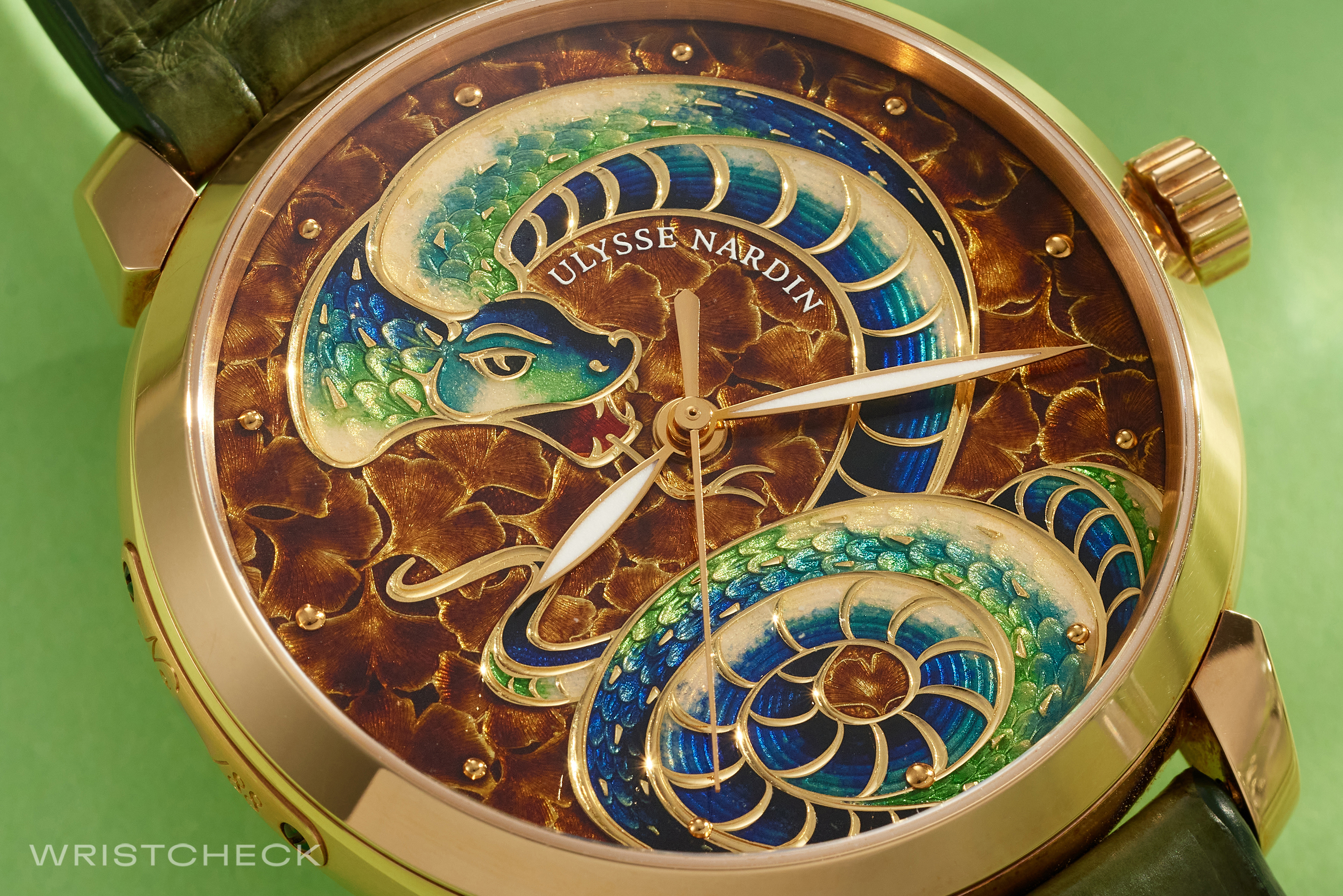
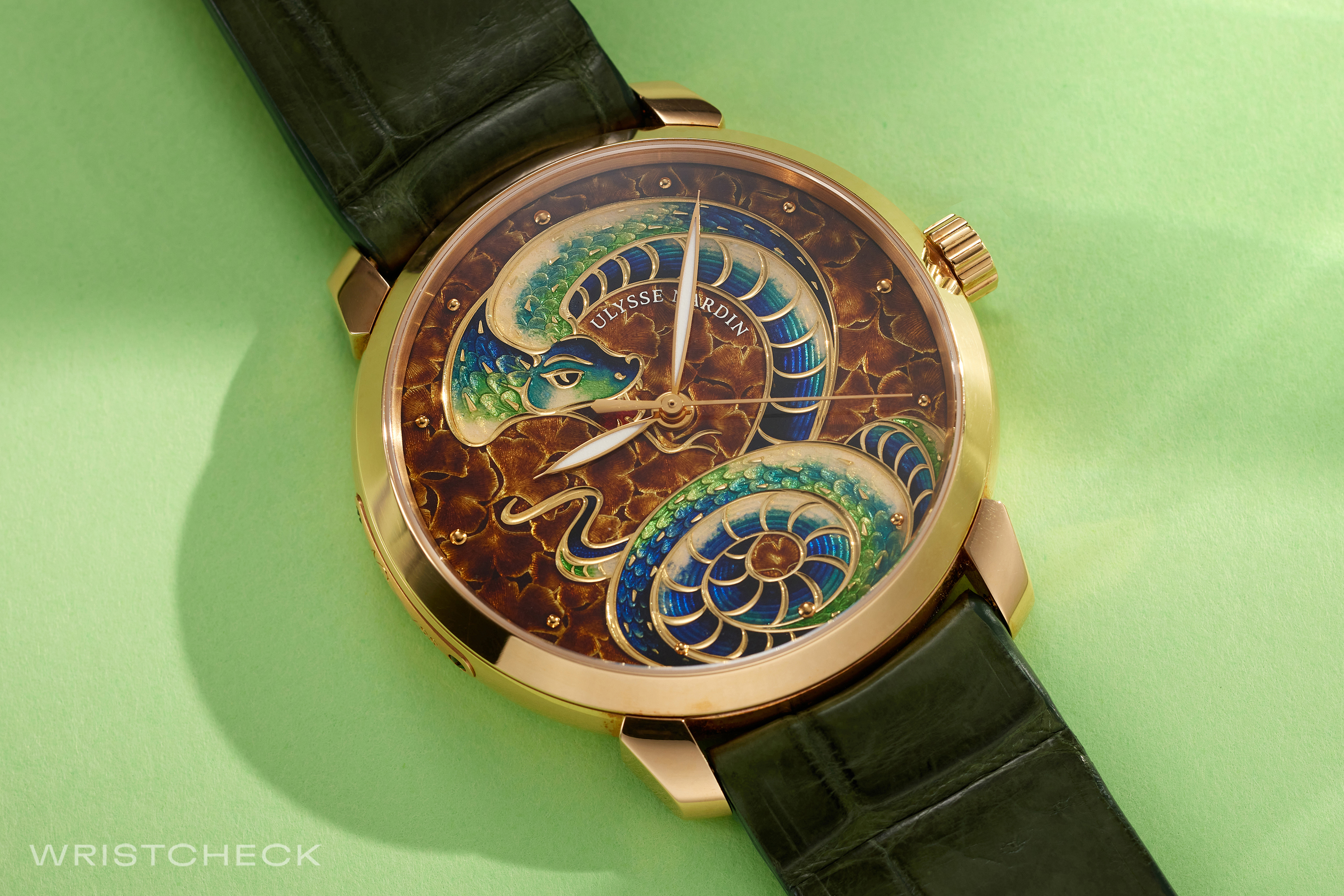
In 2013, to mark the year of the snake, Ullyse Nardin released the Serpent. The reptile here is, once again, executed in a champlevé technique. The texture on the snake’s body also looks more complex compared to the Dragon, not least because of the pronounced rings, but also due to the complex gradients that go from black to blue, to green and gold all over the creature’s body. The background of the watch was no easy task either – each leaf boasts delicate lines extending from its stem. This effect resembles the meticulous rigato engraving technique often seen in high jewelry, particularly among brands like Buccellati.
Ulysse Nardin Classico Horse
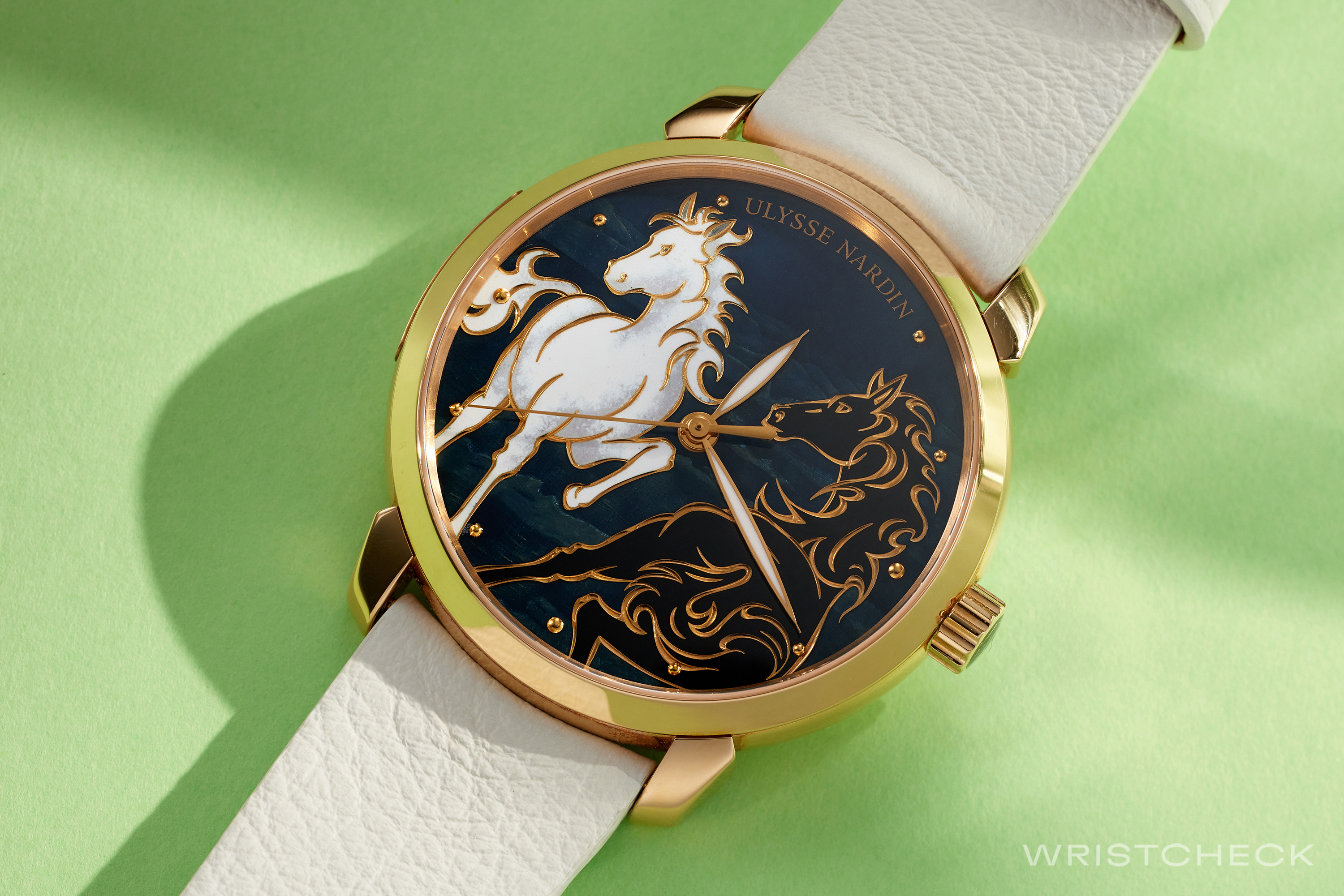
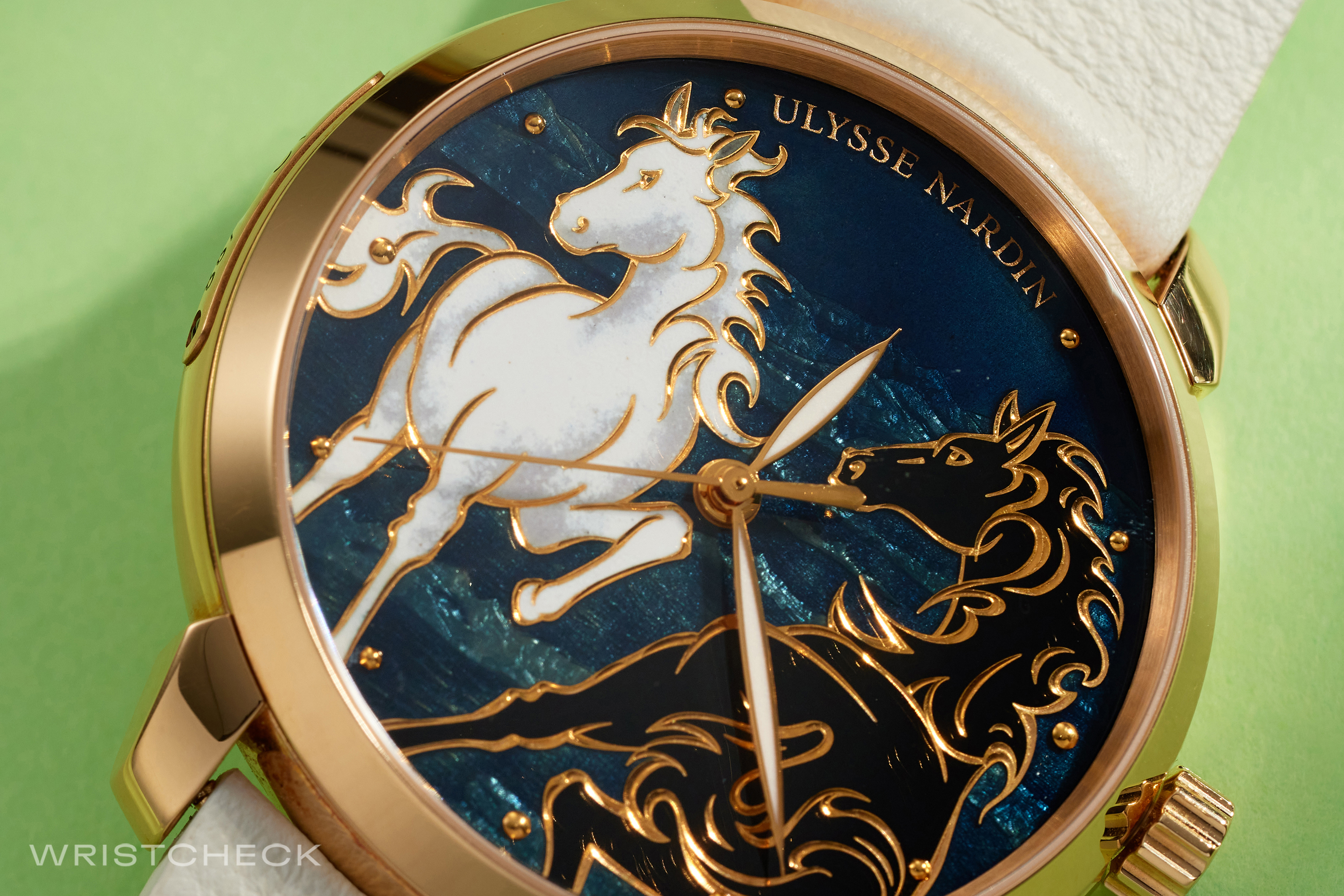
Unveiled in 2014, the Classico Horse watch stands out from its counterparts, the Dragon and Snake, in several distinctive ways. Primarily, its intricate dial presents two magnificent creatures instead of one; a pair of black and white galloping stallions. Their flowing manes, swishing tails and powerful legs convey an electrifying sense of motion. The leftmost steed boasts subtle gradations achieved through the use of a grisaille technique, which employs the pigment called blanc de limoges to create stunning shades of gray. These majestic horses are made with the champlevé method, as evidenced by their metal outlines. Another noteworthy feature of the Horse is the textured bluish green background that resembles either rippling waves or a sheet of shimmering mica.
